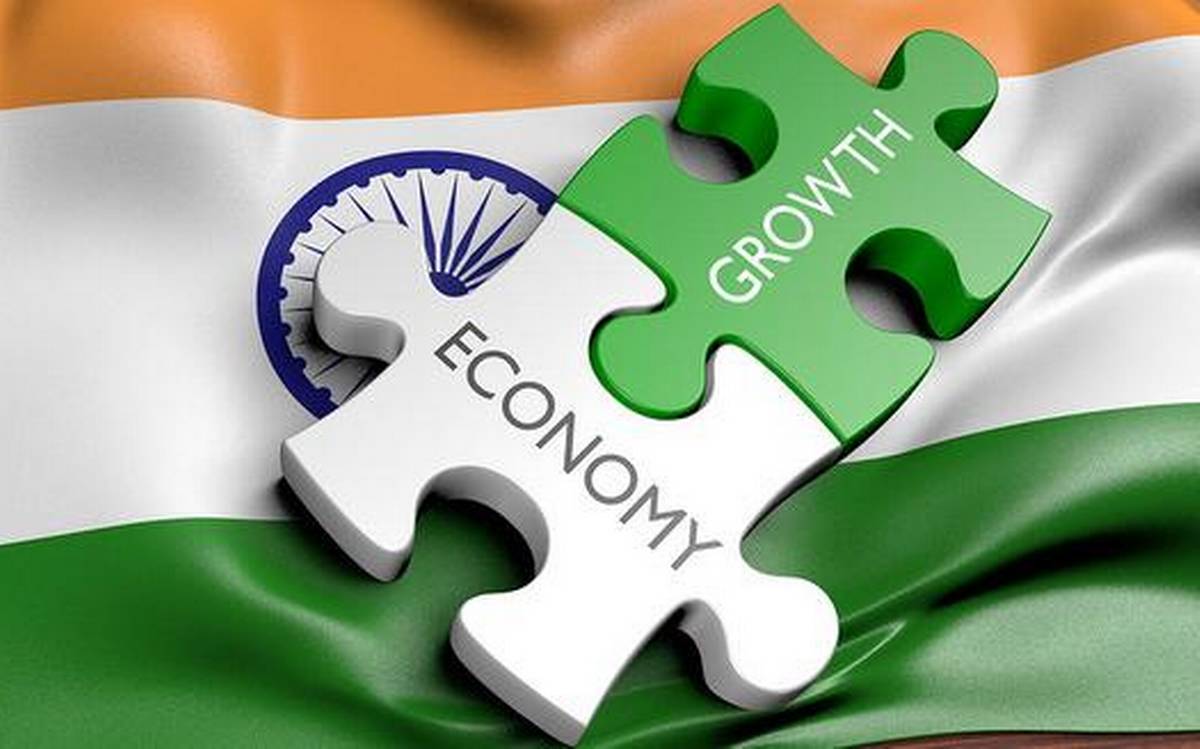India’s FDI Outlook: A step towards economic recovery

“The economy of the country is recovering unevenly, with some industries doing better than others. However, the pandemic's wounds are deep, and even though there is a V-shaped rebound, the economy is likely to be stressed.”
After battling one of the worst recessions in recent memory, India's economy showed signs of life in Q3 FY 2021, with a positive growth rate. Until recently, economic activity seemed to be picking up at a steady rate, with people showing more interest in going out and shopping.
Of course, the recent increase in infection and the looming danger of variants have cast a pall over the situation. A few states are reimposing mobility limits that damage the economy the most (albeit in a calibrated manner). Although it's easy to lose heart in difficult times, similar stories from around the world provide some solace. We expect the economic and health impacts of the subsequent waves in India to be limited to a quarter or two, similar to how the United States saw a sharp rise in infection rates during the second wave (starting November) but experienced a relatively low economic effect compared to the first wave.
We are cautiously positive, forecasting 11.7 percent growth in FY 2022. Growth in FY 2022 would most likely be a tale of two halves, with the second half picking up quickly. Although we anticipate a strong recovery in the coming years, it would be naive to ignore the economic scars that the pandemic will leave behind. The emergence of a dichotomous world that we are currently experiencing is one of the obvious consequences. We take a look at the growing disparities that could have ramifications around the economy.
Initiatives by the government
As the economy began to tank, the government acted quickly to enact the ‘Atmanirbhar Bharat Abhiyan,' a stimulus package worth approximately Rs. 20 trillion (US$ 270 billion) (10 percent of India's GDP) to jumpstart the economy. It also took new steps to strengthen infrastructure, laws, and employment opportunities, all of which are expected to help in long-term economic recovery and reconstruction.
With an emphasis on local producers and service providers, the ‘Atmanirbhar Bharat Abhiyan' aims to make the country self-sufficient. The economy, infrastructure, technology-driven programmes, demography, and demand are the five pillars of this initiative. Improving import substitution, revitalising demand, and fostering export-oriented industrialization are highlighted as main drivers of India's potential economic development. With 24.4 percent, 17.2 percent, and 16.3 percent allocations, banking, companies and MSMEs, and agriculture are some of the major beneficiaries of this initiative.
The secret to India's economic growth is a strong and resilient banking and financial sector. To improve productivity and transparency, the government is consolidating public sector banks, which are major players in the Indian market. The government is also addressing the NPA (non-performing assets) crisis that has bedevilled India's public sector banks, with recovery goals being set.
Capital expenditures
The Indian economy relies on a delicate balance between government interference and free market values to function. The government has worked to make the Foreign Direct Investment (FDI) regime more investor-friendly and to eliminate policy bottlenecks that have stifled investment inflows into India. From April to August 2020, FDI into India increased by 16 percent year on year to US$ 27.1 billion.
Foreign Portfolio Investors/Foreign Institutional Investors (FPI/FII) have been one of the most important drivers of India's financial markets; between 2020 and 2021, they invested Rs. 12.9 trillion (US$ 174.31 billion) in India, at a time when most Asian markets are experiencing net withdrawals. This indicates that investors are optimistic about India's long-term prospects.
Statistics on the population
India's population is among the world’s youngest. By 2022, India's median age would be 28 years old, compared to 37 in China and the United States and 45 in Western Europe. India's working-age population outnumbers its non-working-age population by a wide margin. As a result, India is currently experiencing a demographic dividend, which began in 2005 and is projected to last until 2055. With 1.3 billion people, India is the world's second most populous country. India, on the other hand, would need to ensure that a large number of skilled jobs are created in order to reap the economic benefits of a large and growing working population and evolve into an economic superpower.
Rising the number of people working in urban areas
The focus has turned to reverse migration following the migrant workers' crisis during the lockdown. There have also been stories of staff returning to their homes after being unable to find jobs. In the first half of 2020-21, the MGNREGA (Mahatma Gandhi National Rural Employment Guarantee Act) was used by more than 86 million people. This is the highest level of participation in the scheme since its inception in 2006, and the rural job environment is under severe strain.
This scheme has the potential to increase and stabilise urban incomes in addition to increasing buying power and therefore consumption demand. This will also help to maintain a stable national labour market by regulating inter-state migration, which can help to maintain a constant balance of surplus and shortage in various labour markets. The scheme has the ability to generate urban assets such as environmentally sustainable green public spaces, as well as complementing current central government initiatives such as smart cities.
Investment in physical and social infrastructure by the government
It would be futile to expect private investment to save the economy when it is suffering from a lack of overall demand. As a result, public investment is needed to crowd in private investment – at least for the time being. India's lack of infrastructure facilities has been cited as one of the major reasons for industry's failure to take off and reach desired levels, especially manufacturing.
Infrastructure has also been a major factor in the country's failure to attract significant foreign direct investment. This period of crisis may have provided an opportunity to close the long-standing divide. For a year or two, aggressive public infrastructure spending will help the economy recover.
Prepare for a lopsided comeback
It's important to understand the brewing disparity that's increasingly becoming more visible. We looked at a few forward-looking metrics and discovered several startling contrasts. Some of these may fade away over time as the economy gains traction, while others will take longer.
Businesses were able to bounce back with greater optimism after mobility limits were removed and supply shortages were minimised. Consumer trust in the economy was shattered as a slow labour market recovery and health and financial problems kept them from spending. Although this distance will close with time, a few others would almost certainly take longer.
One such widening gap has been in the economy's sectoral credit lending. Since 2015, there has been a persistent gap in bank credit lending to services and manufacturing. With the uncertainty surrounding COVID-19, however, the distinction has become more noticeable. Despite a faster turnaround in manufacturing as movement constraints were relaxed, lending to the industry contracted year over year after August 2020. Credit to the services sector, on the other hand, has remained relatively high, although at a slower pace than in 2017–19.
This widening gap is concerning for a country aspiring to become a global manufacturing hub. Low credit growth can limit industry's ability to spend and expand at a time when India is attempting to become self-sufficient and develop economies of scale.
MSMEs, which make up the backbone of the manufacturing sector, accounting for 34% of total production, have been hard hit by the pandemic and are still struggling to remain afloat months later. Because of stronger balance sheets, more cash on hand, and business continuity plans, larger businesses fared better during the pandemic.
Meanwhile, due to a severe shortage of working capital, cancelled orders, customer losses, and severe supply chain disruptions, MSMEs were caught off guard. The majority of MSME portfolios and nonperforming assets (NPAs) for a few banks are still at high levels compared to previous years.
Conclusion: Towards hope, recovery and growth
After the pandemic, net foreign direct investments (FDIs) have exceeded all expectations, and the pattern has remained consistent. However, a closer examination of capital flows by sector reveals significant disparities in the industries that have attracted capital investments from international investors. Over 47% of FDI went into the computer software and hardware market, while 13.9 percent went into construction (including infrastructure). Other industries have received a relatively limited share of the inflow. Manufacturing, chemicals, metals and materials, and transportation were the industries with the newest projects revealed.
In the future, the government will play a critical role in developing manufacturing and export-friendly policies to help India's private sector advance its agenda of job creation and economic development. India is projected to become a major export and outsourcing centre, with a central role in many industries' supply chains. A stimulus of this magnitude is needed if the economy is to be revived. Following the FRBM's required goals now could severely harm the economy, and a lower fiscal deficit next year would be useless.








